By Eric Hammel
George Catlett Marshall was the greatest American military man of his age. If the United States Army had kicked off the 20th century with the specific intent of constructing a chief of staff to lead it to victory in World War II, it could not have done a better job than what chance provided in the triumphs and travails over the 40 years that molded George Marshall.
Marshall in the Great War
Born in Uniontown, Pennsylvania, on December 31, 1880, Marshall entered the Virginia Military Institute with the class of 1901, with which he graduated as first captain. His first posting as an infantry lieutenant was to a unit in the Philippines a year after the insurrection there had been put down. Following a two-year tour in Oklahoma, Marshall was selected (at the urging of his mentor, Brig. Gen. John J. “Black Jack” Pershing) to study at one of the early service schools, the School of the Line, at Fort Leavenworth, Kansas. He excelled academically, passed an exam for promotion to first lieutenant, and was assigned first as a student to the Army Staff College, then as an instructor for two more years.
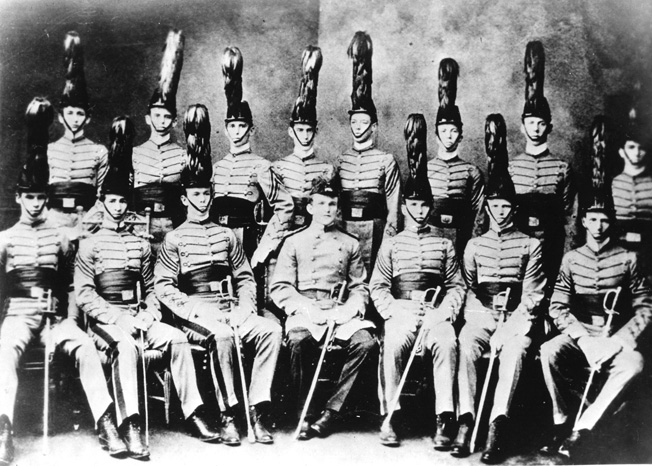
In the remaining years before the Great War, Marshall undertook routine assignments. He took extended leave twice, first to watch the British Army train in the United Kingdom and later to tour Russo-Japanese War battlefields in Asia and discuss tactics with Japanese officers. He came away from these interactions with a list of things he wanted to see fixed in the U.S. Army, among them a paucity in night battle doctrine, a technique he drove home throughout his career. Well regarded by his peers and his superiors as a comer, but without any first-hand experience in war, Marshall was finally promoted to captain in mid-1916.
With a temporary promotion to lieutenant colonel, Marshall arrived aboard the first American troop transport to reach France as an assistant operations officer with the 1st Infantry Division. The arrival was more symbolic than anything, for it became Marshall’s job to train the division to take part in actual war. This he did with great success. Alas, Marshall was considered too valuable to command troops in battle; he ended the war as an unblooded temporary colonel serving as operations officer of the U.S. First Army.
A Friendship with Stilwell
Marshall’s brilliant work in France brought him an assignment to his old mentor, General of the Armies John Pershing, whom he served as aide-de-camp for five years right after the war. This was as career-boosting a friendship as could befall any Regular Army officer.
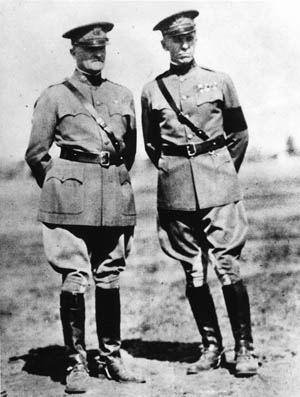
From an office in Washington, Lt. Col. Marshall was transferred to an office in China, where he served as executive officer of an infantry regiment based in Tientsin. It was here that he rekindled a friendship with Major Joseph Stilwell, who had served with Marshall in France on the 1st Infantry Division staff. Marshall’s relationship with the fiery but intellectual Stilwell is emblematic of the relationships, forged over a long career, that served the World War II Army so well when Marshall was able to reach back, so to speak, to elevate officers who had made an especially good impression on him, whose work ethic and thought processes he particularly admired.
Teaching 200 Future Generals
In 1927, Marshall was an instructor at the Army War College at Washington Barracks (now known as Fort Lesley J. McNair) in Washington, D.C.—a heady assignment he might have relished had it not coincided with the death of his beloved wife, Katherine. Seen by friends and interested superiors as a man who might need to bury his grief in hard work, Lt. Col. Marshall was reassigned as assistant commandant of The Infantry School at Fort Benning, Georgia, which placed him in charge of the instructional staff and the curriculum. Marshall’s posting to Benning was the assignment from which the United States Army derived its victory in World War II.
A listing of students and instructors at The Infantry School during Marshall’s five-year tour as assistant commandant and then commandant is tantamount to a list of the best army, corps, and division commanders the U.S. Army—which is to say George Catlett Marshall—put into play during World War II. The comprehensive changes, the instructional innovation, and the sheer amount of training to think on their feet engineered by Marshall during his Benning tour set these younger officers up for the battlefield victories they would one day win.
Approximately 200 future generals transited Benning as students or instructors during Marshall’s tenure, and he had a direct hand in elevating nearly every single one of them to flag. Among the most prominent were Lt. Col. Joseph Stilwell, Major Omar Bradley, Major Gilbert Cook, and Captain J. Lawton Collins. Also, Lt. Col. Courtney Hodges served on the Infantry Board with Marshall. A few of the more celebrated future generals who passed through the school as students during Marshall’s tenure included Terry Allen, Clarence Huebner, James Van Fleet, Walter Bedell Smith, Matthew Ridgway (who had served with Marshall in China), Manton Eddy, and Norman Cota.
The Renaissance of the Infantry School
The Infantry School itself, which was dedicated to training mid-career officers who were ticketed to move up, underwent a renaissance under Marshall, who encouraged—in fact, demanded––original thinking and inspired experimentation. At Marshall’s urging, basic infantry tactics, all the way to squad level, were stripped down, studied, rejiggered, and finally updated for the modern battlefield and its modern weapons. At The Infantry School, Marshall quite literally changed the way American infantrymen at all levels conducted war and, in so doing, he personally gave rise to the intellectual renaissance that swept the U.S. Army ground establishment in the lean 1930s.
Marshall built upon the work of his immediate predecessor, Colonel Frank Cocheau, who put into play a new teaching principle when he arrived at Benning in mid-1925: demonstration-explanation-performance. All of the students had to go through each lesson. First the instructor demonstrated to the students what they had to learn, usually by employing crack infantry units assigned to The Infantry School for that purpose. Next, the students were expected to explain the lesson to the instructor. Finally, the students had to prove to the school staff that they had learned the lesson.
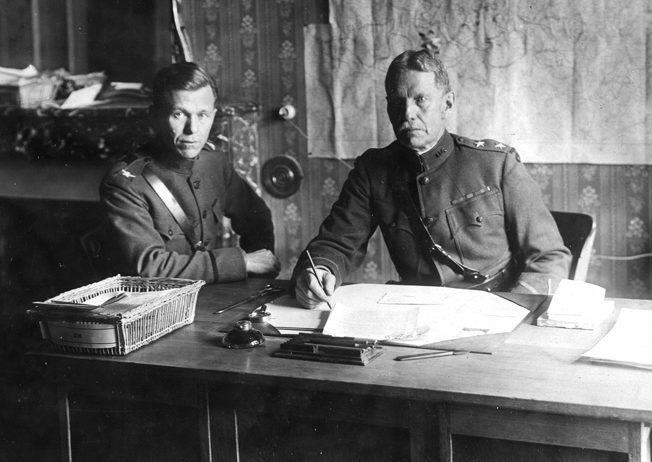
This evolution revolutionized military training in the United States and it was significantly bolstered when Cocheau dispatched an instructor for a year at the University of Minnesota to study educational psychology. When this officer returned to Benning, Marshall asked him to run a seminar for the school staff to enhance the overall approach to the mission of educating intelligent men years away from college and at the edge of a phase of life in which many adults literally close their minds.
When he arrived at Benning, Marshall’s mission was not so much to remake The Infantry School, per se, as to remake The Infantry School in such a way as to eventually transform the entire Army by changing the way its officers thought about war. It was Marshall’s observation from numerous field exercises and the experience of developing operational plans for an infantry division and ultimately a field army in France that planning a battle is an effort in controlling chaos: it couldn’t be done. Marshall’s key insight and innovation, which alone would have earned him a secure spot in military history, was that battlefield commanders could be systematically reconditioned to accept the chaos as inevitable and to factor it into both advance planning and the actual way they would undertake their quest to dominate any battlefield of any size.
Training Officers to Expect the Unexpected
In addition to training officers to be flexible thinkers, Marshall’s new syllabus proved to be an excellent tool for weeding out officers who could not be weaned from an unbridgeable tendency to freeze up when their plans inevitably went awry.
Marshall backed his theory with ample training examples: a last-minute change in objectives just as a fully briefed infantry force was about to set out; the appearance out of the blue of a flanking movement by enemy tanks that had never been briefed into the exercise; or orders for moves that did not match up to any maps any of the students had in hand. Marshall and his instructors were positively diabolical in the ways they screwed up the best-laid plans of their students, all with the intention of forcing them to rely on and hone their native ability to think on their feet under intense pressure.
Marshall also demonstrated in a hundred different ways how even the smartest students had not sufficiently honed their powers of observation. And he forced his students to think, and observe, and act as much in the dark of night as in the light of day, for the night attack, which was underappreciated and therefore underutilized by the U.S. Army, was a chaos-inducing tool embraced by many potential adversaries. Indeed, the night attack had become Marshall’s favorite tool after he heard it extolled by Japanese officers during his tour of Russo-Japanese War battlefields before the Great War.
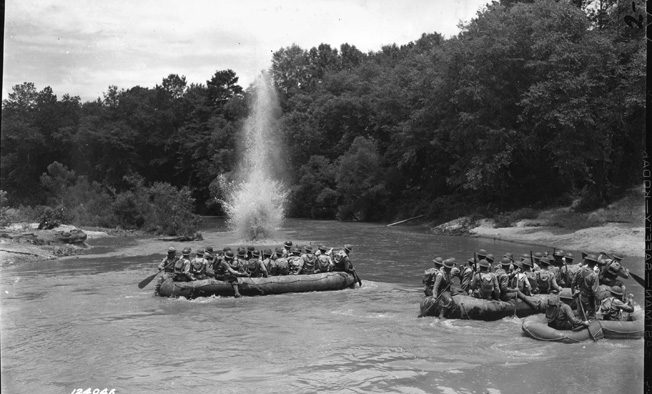
Another ironclad aid Marshall taught was economy of thought. He constantly harped on the instructors to tighten up their written and verbal lessons, and for the students to explain things in the fewest possible words, oral and written. He wanted the essence, the heart of the matter, to be delivered clearly in the least possible time. As with all of Marshall’s practical lessons, this revolution in brevity eventually permeated the Army, for instructors and students alike were released back into the Army’s many nooks and crannies when their time at Benning ended, all unabashedly enthusiastic to train their fellow soldiers.
Creating the Optimal Infantry Battalion
Marshall’s influence reached well beyond the classroom during his tour at Benning, for the Infantry School was as much a laboratory as it was an educational institution. By employing the demonstration infantry regiment resident at Benning, Marshall and the various geniuses he commanded played with the size and internal organization of the infantry battalion to find an optimal size and organization.
The battalion was the smallest organization in the Army that could conduct independent, self-contained operations. Mirroring the Army general staff set-up, the infantry battalion had a complete staff with slots for personnel and administration (S-1); intelligence and scouting (S-2); training, planning, and operations (S-3); and logistics and supply (S-4). The battalion comprised three infantry companies and a weapons company armed with mortars and machine guns. The questions Marshall posed were: How big could a battalion be if it was to be easily controlled in battle by its commander? And, what was the smallest it could be to accomplish its missions while freeing up troops and officers to man a larger number of battalions? Where was the balance?
Working with battalions ranging in size from 300 to 3,000 men, Marshall’s team arrived at 850 as being the optimal requirement for an infantry battalion of the day. This was so accurate an analysis that many of the world’s armies field infantry battalions roughly 850-strong to the present day.
Lobbying For More Firepower With Fewer Men
As soon as The Infantry School had designed the ideal infantry battalion, Marshall went to work to design the ideal infantry regiment and division—indeed, the ideal infantry squad, infantry platoon, and infantry company. He and his men made a lasting mark on all these levels except at the divisional level.
In a report Marshall had probably written over the signature of General Pershing, the chief of staff had attempted to make a case for a smaller infantry division than the four-regiment behemoth the Army fielded in France. Riding on his other successes at The Infantry School, Marshall attempted to get the generals to sign off on a plan to triangularize the entire infantry, from platoon to division.
The seniors agreed to do so from platoon to regiment (three squads per platoon, three rifle platoons and a weapons platoon per company, three infantry companies and a weapons company per battalion, three infantry battalions and a heavy weapons company per regiment). But the attempt to change the shape of the infantry division (from four infantry regiments and an artillery regiment) was quashed. The division was, after all, the purview of generals.
Marshall and his acolytes proposed providing so much fire power to the smaller triangular division that it could throw twice its old weight in steel but tie up only half as many men. The generals quashed this recommendation as well, but Marshall and his subordinates filed it all away, certain that at least one of them would one day cast the deciding vote.
The Holding Attack
Once the infantry organization was triangularized from platoon to regiment, The Infantry School focused on the optimum tactic for it: the holding attack. Even at squad level, a fire element that included at least one automatic weapon could establish a base of fire and engage the enemy on his front—hold the enemy in place—while the rest of the unit attempted to skirt the beaten zone to deliver a flank or rear assault. One element holding the enemy under fire and a maneuver element delivering an attack from outside the ring of fire equals a holding attack. It takes fewer troops to hold than to attack.
Thus, one squad and perhaps an attached machine gun could establish and hold the base of fire while the other two squads in a platoon maneuvered to mount a flank attack. With the aid of light mortars and one or two machine guns, one platoon could hold and two platoons could attack. Even better, to hedge against inevitable chaos, one element could hold, one element could attack, and one element could be held in reserve to perhaps bolster the attack, reinforce a base of fire, exploit a breakthrough, or counter an enemy counterattack. Companies, battalions, regiments, divisions, corps, field armies, and even army groups could exploit the utter simplicity of the holding attack. And, of course, the holding attack Marshall favored was ideally served by a triangular organization.
Fire-And-Move
In 1930, Captain J. Lawton Collins, a particular favorite of Marshall’s, came up with a simplified scheme for close-order drill that finally took into account the fire-and-move small-unit tactics of every American battlefield since Gettysburg, or even First Bull Run.
The objective of drill prior to the Great War’s trench warfare was to move an infantry unit across a battlefield in a solid, protective block that could put out massive coordinated volleys of fire as well as reload behind a protective screen of bullets or bayonets. Repeating rifles and machine guns, when they appeared, shredded the old battle formations and led to fire-and-move tactics, which allowed individuals and small groups of infantrymen to make use of cover and terrain as they advanced on the enemy in small rushes, putting out suppressive fire as they went or with suppressive support from a stationary base of fire.
The first real use of fire-and-move tactics was posited by Confederate General James Longstreet of the Army of Northern Virginia, around 1863––a response to rapid-fire, breech-loading rifles in the hands of Union common infantry. In any case, 1930 seemed about time to alter the very old close-order drill regulations, and Collins had a very simple drill all worked out. Marshall agreed; he endorsed it and sent it up the chain. It was dead on arrival.
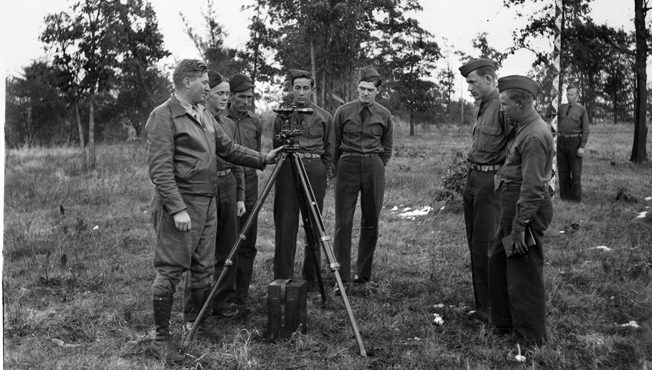
Both the chief of the infantry branch and the chief of staff, General Charles Summerall, rejected it out of hand, claiming its very simplicity would hurt Army morale. This speaks volumes about the usefulness of the drill; it was no longer about battlefield evolutions; it was about the discipline many officers thought could be derived from mind-numbing, time-eating, make-work projects aimed solely at keeping idle hands and feet moving in some regimented way. The Collins drill endorsed by Marshall was aimed at building confidence, enhancing teamwork, and developing unit esprit. Marshall was unwilling to go to the mat with General Summerall, under whom he had served in the 1st Infantry Division in France, but he kept Collins and his modern drill in mind for some future opening.
An Army of Voracious Readers
Under Marshall’s influence, The Infantry School professional library was massively built up, and everyone who passed through the school was expected to read voraciously—to make time to read within an impossibly busy schedule.
Even without the crucible of World War II, Marshall and the hundreds of officers he influenced during his tour at The Infantry School changed the U.S. Army forever. They learned and tested and nurtured truths about making war—and about teaching and learning and running organizations, about working cooperatively, and so on. Their efforts stood their nation in good stead for nearly as long as the youngest of them drew breath. They infected the Army and a nation of wartime soldiers with their virus for getting things done, with their patented American can-do spirit. And in doing so, they changed the world.
If George Catlett Marshall had accomplished in life only what he accomplished at Fort Benning between 1928 and the fall of 1932, he would have been accorded a place of honor in American military history. But there was more to come.
Reforming the National Guard
When the Benning tour ended, Marshall, who had remarried in 1930, was posted to Georgia to command a rag-tag battalion of infantry.The unit was so small and so poorly equipped that it could not realistically train. Morale was extremely low because the poorly paid troops could not buy enough food for their families, a problem Marshall fixed on the sly by selling the needy troops “leftovers” from the battalion kitchens for pennies on the dollar.
During his tour in Georgia—and from May 1933 as commanding officer of an infantry regiment in South Carolina—Marshall had his first experience with the Civilian Conservation Corps (CCC), for which he oversaw the construction and administration of 34 camps staffed in part by Regular Army officers and noncommissioned and Organized Reserve officers. This experience, and a later one in the Pacific Northwest, gave Marshall a refresher course in dealing with the induction and training of masses of people who, to an Army officer, looked an awful lot like raw recruits. This is what he had done for the 1st Infantry Division in 1917 and part of 1918, and it helped prepare him for what he would have to do beginning again in 1940.
In October 1933, after only five months in command of his regiment, the crown jewel of many a career, Colonel Marshall was abruptly reassigned as senior instructor to the staff of the 33rd Infantry Division––the Illinois National Guard command based in Chicago. The move came as a blow to Marshall. Had he done something wrong? Was he being shown the door?
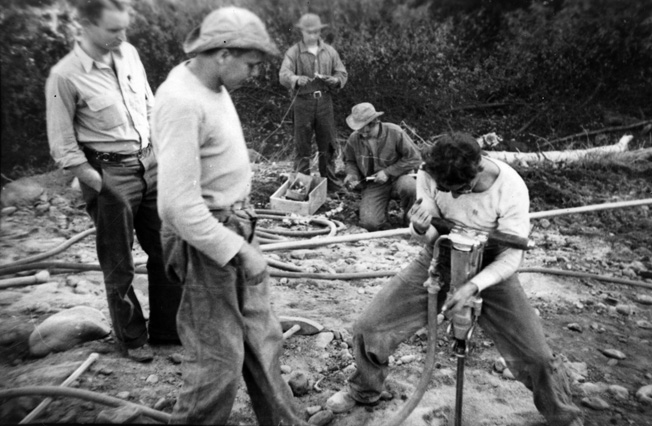
Not at all. The 33rd Division had been called out in 1932 to dampen the effects of forecasted labor unrest in an urban area facing 50 percent unemployment. The Guardsmen had performed less efficiently than expected. It was Marshall’s brief to train the division to a level the Army required in the event the National Guard was called to war.
Yet again, a playwright could not have done a better job than chance did when it came to scripting the details of the career of the man who would be the nation’s number one soldier when, indeed, the entire National Guard was called to the colors. It would be Marshall’s lot to oversee the training and equipping, even the streamlining and a massive change in management for the entire Guard. The insights he gained into Guard methods, Guard shortcomings, and Guard politics while he served in Illinois, not to mention new ways to apply The Infantry School experience, were legion.
Managing a Promotion to Brigadier General
The promotion clock nearly ticked out on Marshall. If he didn’t get a star soon, he would be mandatorily retired as a colonel. And even if he won one star, could he earn two before the unofficial cutoff, at age 61, after which tradition forbade generals from being considered for the post of chief of staff? It is true that by the mid-1930s, Marshall wanted to be chief of staff, and he even felt he had an outside chance to get there.
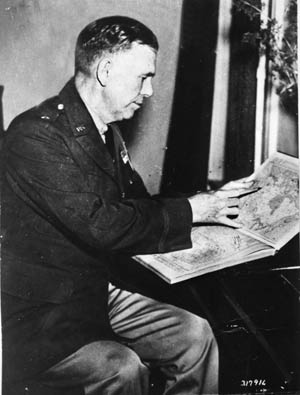
Several senior officers who knew Marshall well took it upon themselves to extol his merits as a means to getting him a star. Marshall, on the other hand, made only one request of only one man. General Pershing, who had been Marshall’s best man at the second wedding, agreed to lay out Marshall’s career in writing, via efficiency reports dating back to 1915, to the secretary of war. Pershing, however, had a better card to play: he spoke in Marshall’s behalf directly to Franklin Roosevelt. And Roosevelt, in May 1935, took care of the secretary of war in a brief note: “General Pershing asks very strongly that Colonel George C. Marshall (Infantry) be promoted to Brigadier. Can we put him on list of next promotions? He is 54 years old.”
The 1935 promotion list was issued without reference to Marshall. Someone high up was willing to defy the president. But defy Pershing? Even in old age and long retirement, Black Jack would not take it. The old general of the armies went to work behind the scenes. Chief of Staff MacArthur was set to swing into action, but the other player whose wishes had been defied set another mechanism in motion. On October 2, 1935, the president announced that MacArthur was to nominally retire in order to travel to Manila to advise the new defense force of the Commonwealth of the Philippines, which was only a few years away from being granted independence as a sovereign nation. Named in MacArthur’s place as chief of staff was Maj. Gen. Malin Craig, who was elevated to four stars.
Craig and Marshall were friends going back 30 years. The new chief backed Marshall’s advancement, but he could not move the promotions board. Rather, the commanding general of VI Corps, who was based in Chicago, lived across the hall from the Marshalls, and was another of Marshall’s old friends and admirers, arranged for Marshall to pay a visit to Secretary of War George Dern in April 1936. The colonel came away from the meeting with a verbal commitment that Dern would see to the promotion no later than September.
A One-Star General as Second-in-Command
On October 1, 1936, Marshall was promoted to brigadier general and elevated to command the 3rd Division’s 5th Brigade in Washington State. Ironically, all the political pull on the Marshall promotion got him his star only a matter of weeks before seniority alone would have done the job. But chalk up another lesson for the future chief of staff: mere seniority would not play a decisive role in moving good men ahead in an Army he might run.
In the Pacific Northwest, Marshall put in much of his time overseeing the regional CCC program and camps. He was particularly caught up in educating and training the young CCC men for work and life in the real economy. Marshall did his best, also, to nurture professional education for his officers, especially the young ones. The list he maintained of especially promising young men grew and grew.
Near the end of 1937, Marshall had a one-on-one conversation with President Roosevelt when the latter toured the Pacific Northwest. Nothing came of it; it was probably as forgettable to Roosevelt as a brief encounter the two had shared in 1928.
The call came in June 1938. Beginning on July 7, Brig. Gen. Marshall was to prepare himself to run the Army’s War Plans Division, as soon as he could get up to speed in a place where reading material was yards thick. Chief of Staff Craig greeted him thusly: “Thank God, George, you have come to hold my trembling hands.”
The War Plans job lasted only three months. As the true meaning of the Munich crisis and Germany’s dismantling of Czechoslovakia settled upon the world, planning in Washington for a war in Europe broke down when Assistant Secretary of War Louis Johnson refused to attend a vital meeting called by General Craig on the excuse that a two-week-old vacancy of the deputy chief of staff had to be filled first, because the deputy oversaw the Army’s budget process. On a personal level, Craig was all for filling the vacancy with Marshall, but Marshall was a very junior one-star general. What would that do to protocol and the morale of most of the Army’s generals?
But Assistant Secretary Johnson, who was pretty much running the Department of War in place of a largely absent Secretary of War Harry Woodring, wanted Marshall for the job. To break the stalemate, Johnson issued Craig a direct order. This was the cover Craig needed; the deed was done during the third week of October 1938. Even though he would wear only one star, Marshall became the number two man in an army that appeared to be headed for war. It didn’t hurt one bit that the voracious information-gathering vessel that was George Marshall had just undergone a three-month crash reading course on just about everything the Army needed and wanted to do to win a war almost anywhere in the world.
Arguing For a More Balanced Military
Weeks after he became Craig’s deputy, Marshall finally made a lasting impression on President Roosevelt. At the November 14, 1938, aircraft meeting, as the assembled honorables listened mutely and nodded appreciatively at the president’s ruminations on the singular virtues of air power, only Marshall spoke up, but only after the president asked his opinion: “Don’t you think so, George?” Marshall was not ready to be addressed so familiarly by a man he barely knew, not even this man. “Mr. President,” Marshall responded in a rather chilly tone, “I am sorry, but I don’t agree with that at all.” And then Roosevelt ended the meeting.
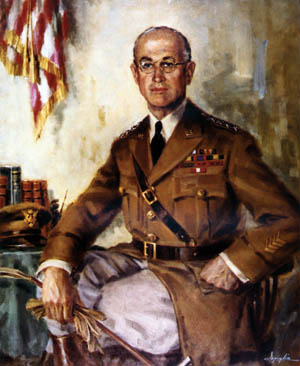
It didn’t matter whether George Marshall agreed with the president; the planning Roosevelt set in motion on November 14, 1938, would move forward because Assistant Secretary Johnson and General Craig—not to mention Roosevelt himself—wanted it to. Marshall could content himself with simply overseeing the budget, or he could advance his case with Johnson and Craig while there was hope that the planning and spending would not so favor the Air Corps that the rest of the Army would shrivel up and blow away. Marshall was not against building airplanes but he could not fathom who would fly tens of thousands of them, nor how they might win a war—maybe two wars, simultaneously—without a little help from a ground army, or even a navy.
When Marshall spoke out at the aircraft meeting he instantly but unknowingly cemented his relationship with two men in the room whom he barely knew. One, Assistant Secretary of War Louis Johnson, had had the most to do with Marshall’s appointment as deputy chief of staff, but the two had not done much to exchange views. Equipping and arming the entire Army was not just a job to Johnson, it was a mission. Johnson expected to be elevated to secretary of war when the president finally tired of having Harry Woodring, an uncooperative, moralizing isolationist, around. Thus Johnson’s backing for Marshall’s elevation was probably an omen that he was building up his own following within the War Department.
Fostering a Relationship With Harry Hopkins
The surprise relationship was with Works Progress Administration (WPA) chief Harry Hopkins, a key personal advisor to the president, who, like Marshall, was unafraid to say “no” to the great man. So unafraid and so committed to rearmament was Hopkins that he had taken several blatantly illegal actions to benefit the Army. In the first instance, he had cunningly reallocated $2 million in funds earmarked for the WPA to purchase machine tools Army arsenals needed but could not get from the Congress, to manufacture small arms ammunition. In the second case, Hopkins saw to it that $250 million in Civilian Conservation Corps funding was used to build permanent housing and other facilities for CCC workers on Army posts. If the Army ever got around to expanding—and Hopkins was betting it would—a significant start in needed barracks and other buildings had been made.
Marshall knew Hopkins had engineered these windfalls, but he did not speak directly with the man until the last week of 1938, when Hopkins phoned Marshall to set up a meeting at his Department of Commerce office. At that meeting the two spoke frankly of their shared views with regard to a balanced Army. This was the beginning of a great friendship and strategic partnership. When Hopkins urged Marshall to make his case for a balanced force directly to the president, Marshall said he felt his earlier candor might have made his opinions moot. Marshall then asked Hopkins to speak up, and Hopkins agreed to do so.
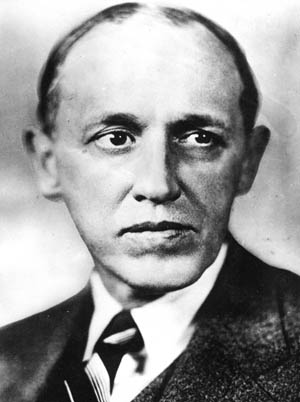
At the Oval Office followup to the aircraft meeting, which took place at the close of December 1938, Roosevelt complained that his November 14 request for airplanes had resulted
in the Army’s asking him for a few planes and everything else in the world it felt it needed in the near term. True to his word, Hopkins spoke first in an effort to realign the president’s thinking. Then Assistant Secretary Johnson piled on. General Craig spoke up too, somewhat more diffidently than the civilians. And in the end Marshall quietly and methodically aired his views in some detail.
Speaking out twice in a row transformed Brig. Gen. Marshall into an inside player—not because of his titular power, but for the power of his character. Far from experiencing an ignominious transfer from his post, he virtually cemented himself in many powerful minds as the leading contender to replace Craig whenever Craig retired. As Douglas MacArthur had learned from his 1933 temper tantrum at his first meeting with the new president, Roosevelt favored one character trait above all others, and that was the courage of conviction that obligated a man to speak truth to power. In the harrowing years ahead, it was perhaps through his powerful trait of unflinching candor that Marshall best served his nation, and perhaps humanity as a whole.
Following their candid and friendly get-together in the immediate aftermath of the November 1938 aircraft meeting, Deputy Chief of Staff Marshall and WPA Administrator Hopkins met whenever they could during the first quarter of 1939. In the main, Marshall educated Hopkins on the ways and needs of the Army because Hopkins was the one person in the Roosevelt inner circle who felt the President urgently needed educating. Roosevelt favored the Navy to the extent of virtually ignoring the Army, and that, Hopkins and Marshall agreed, needed to be corrected.
So, as a deep and genuine friendship blossomed between men who were polar opposites in all things except their passion to build a balanced Army (which had become a catchphrase in Army circles), Marshall filled out Hopkins’s feelings with facts and insights, and these typically found their way to the president’s ear, which became increasingly willing to listen.
Marshall’s Rapid Rise to Head of the Army
Overworked and in faltering health, General Craig gave notice to President Roosevelt in March or April 1939 that he intended to go on terminal leave in late June and formally retire from the Army on August 31. Though Craig favored Marshall to replace him, this was entirely the president’s call.
Marshall was junior to 33 other generals, but when age was factored in, only four could serve out a four-year term before the mandatory retirement age of 64. The competition was going to be fierce, but the front-runner from the Army’s perspective was a little too ardent in his request for the taste of his fellow generals, and he quite possibly offended the president.
Marshall was extremely circumspect in spite of attracting many influential supporters, not least being old General Pershing. But the voice that swayed the president to a man he barely knew and had not yet fully sized up was that of Marshall’s new friend, Harry Hopkins. On April 23, 1939, Marshall was called to the White House.
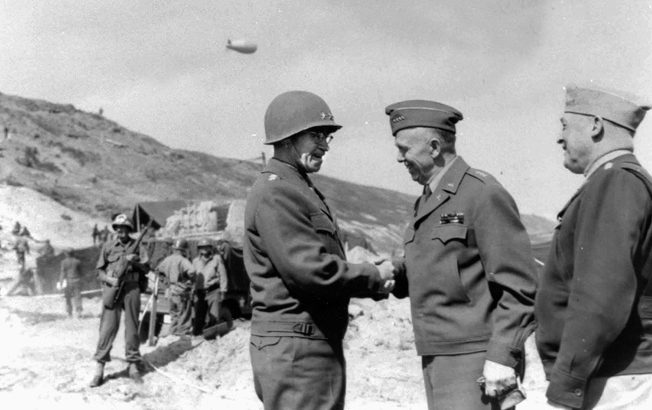
When they met in private, once the offer was made but before it was accepted, Marshall asked the president if he would be allowed to always speak his mind, even if his was an answer or issue Roosevelt didn’t want to hear. The president said “yes,” and then “yes” again when Marshall requested a confirmation. The deal was thus sealed.
George C. Marshall continued to work tirelessly as deputy chief of staff. He was elevated to four-star rank and sworn in as chief of staff on September 1, 1939—the day Germany invaded Poland.
From the very moment Marshall ascended to the head of the United States Army, his was the brain at the center of the orderly, measured growth that created the wartime field armies and all the organizations that supported them until the moment of final victory. His was the voice, second only to the president’s, that reasoned with and brilliantly cajoled a tight-fisted, antiwar Congress toward making available all the resources it took to even begin the mind-boggling undertaking of laying the foundation for the organization that, by 1945, had trained, equipped, transported, and launched millions of Americans toward his own unbreakable goal of total victory.
Marshall had a hand in every aspect of the vital strategic planning that guided his armies across battlefields around the world. He personally approved the retention or elevation of every general officer who served in the wartime army he led, and of course he selected wisely from among the hundreds and hundreds of men he had commanded and taught all across his prewar career.
Marshall’s Postwar Career
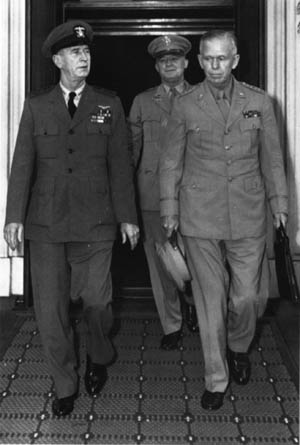
Less than three months after World War II ended, a grateful nation allowed Marshall to lay down the heavy pack he had carried with pride and honor since 1901. But Harry Truman, the new president, still needed him, first to mount a mission to China to attempt to end the civil war there. The effort failed, a rare defeat for Marshall.
Next, in January 1947, Marshall agreed to serve as secretary of state. Among his stellar diplomatic victories—accomplished in little more than a year of service—was what came to be called the Marshall Plan, the American contribution to pulling Europe up from the ashes of the victory Marshall had engineered. For good measure, he supported the building of a modern, democratic Japan on the ruins of the feudal nation his armies had defeated.
He retired again in early 1949, but was called to the colors one last time in September 1950, now to serve as interim secretary of defense at a time when the Korean War was going very badly for the forces of the United Nations. (He replaced his old mentor, Louis Johnson, who failed miserably to pull together a viable field army for Korea.) The six-month tour to which he had acceded stretched to a full year. Marshall retired once and for all on September 1, 1951—a few months over 50 years since taking his oath as a new second lieutenant, and 12 years to the day since being sworn in as Army chief of staff.
George Catlett Marshall, the warrior who was awarded the Nobel Peace Prize in 1953, remained in retirement to the end of his days. He suffered a crippling stroke in early 1959 and passed away, aged 78, in October of that year at Walter Reed Army Medical Center. The old general was laid to rest in Arlington National Cemetery. But the memory of his life and legacy continues to burn brightly like an eternal flame.
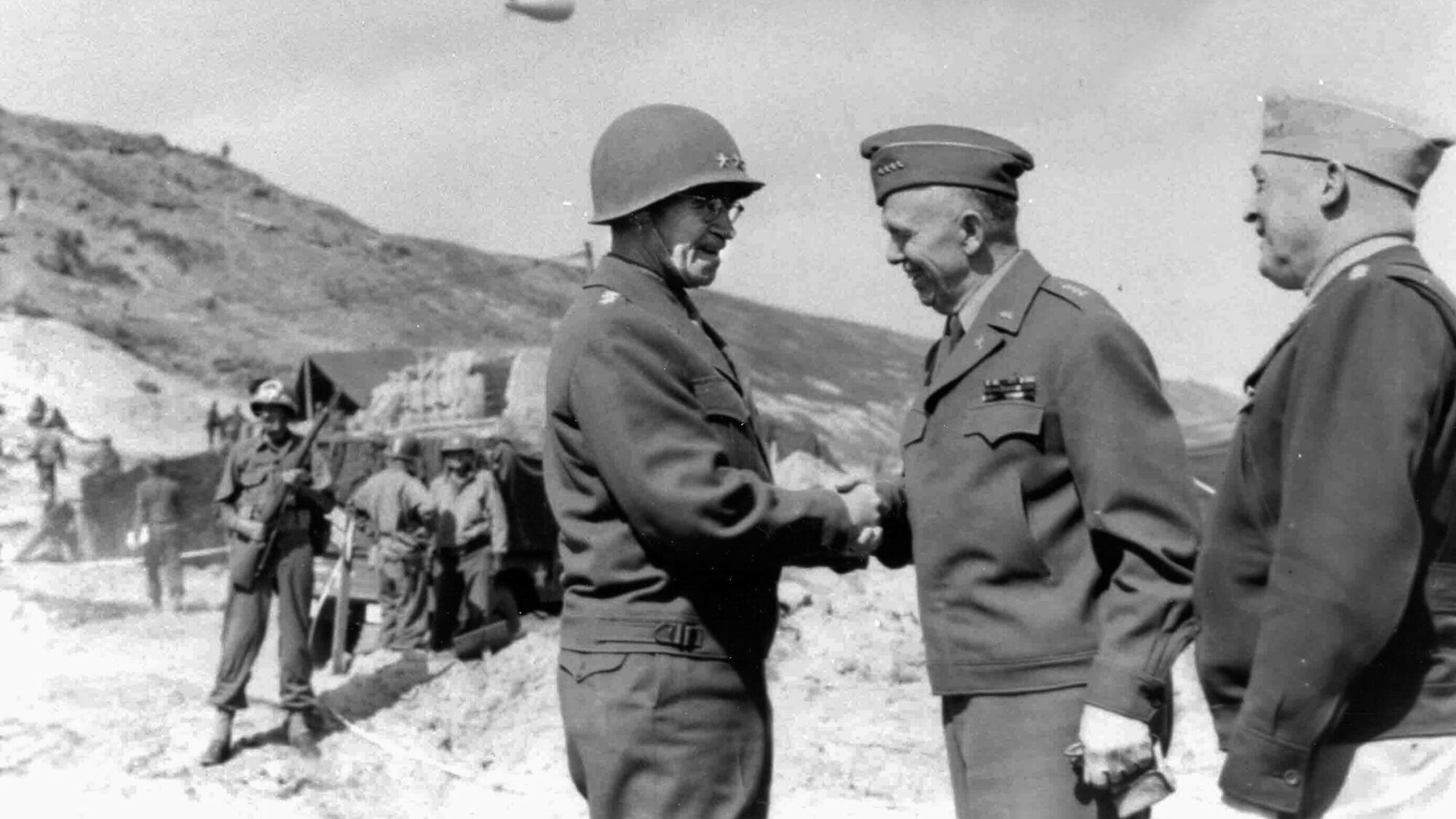
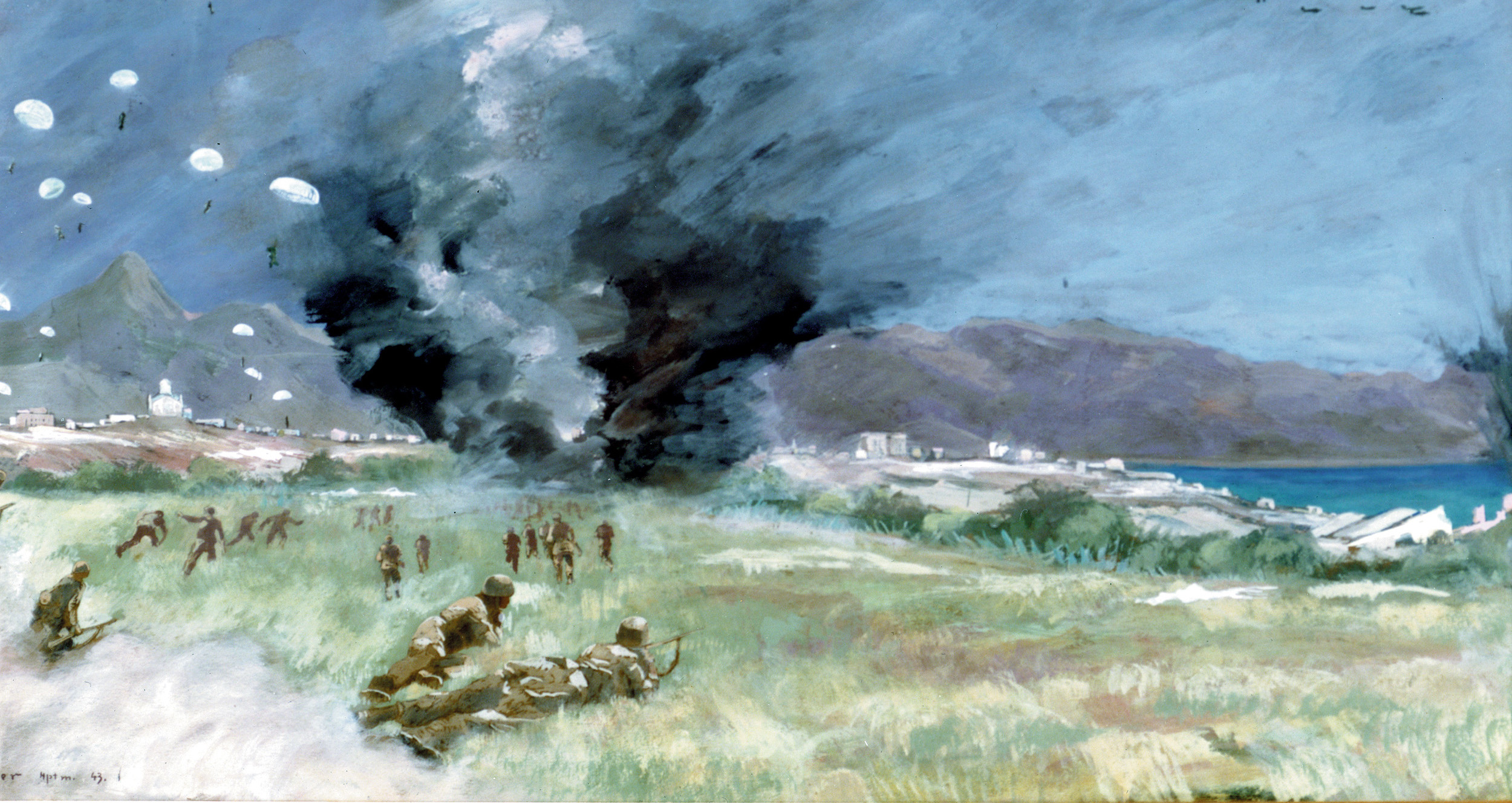
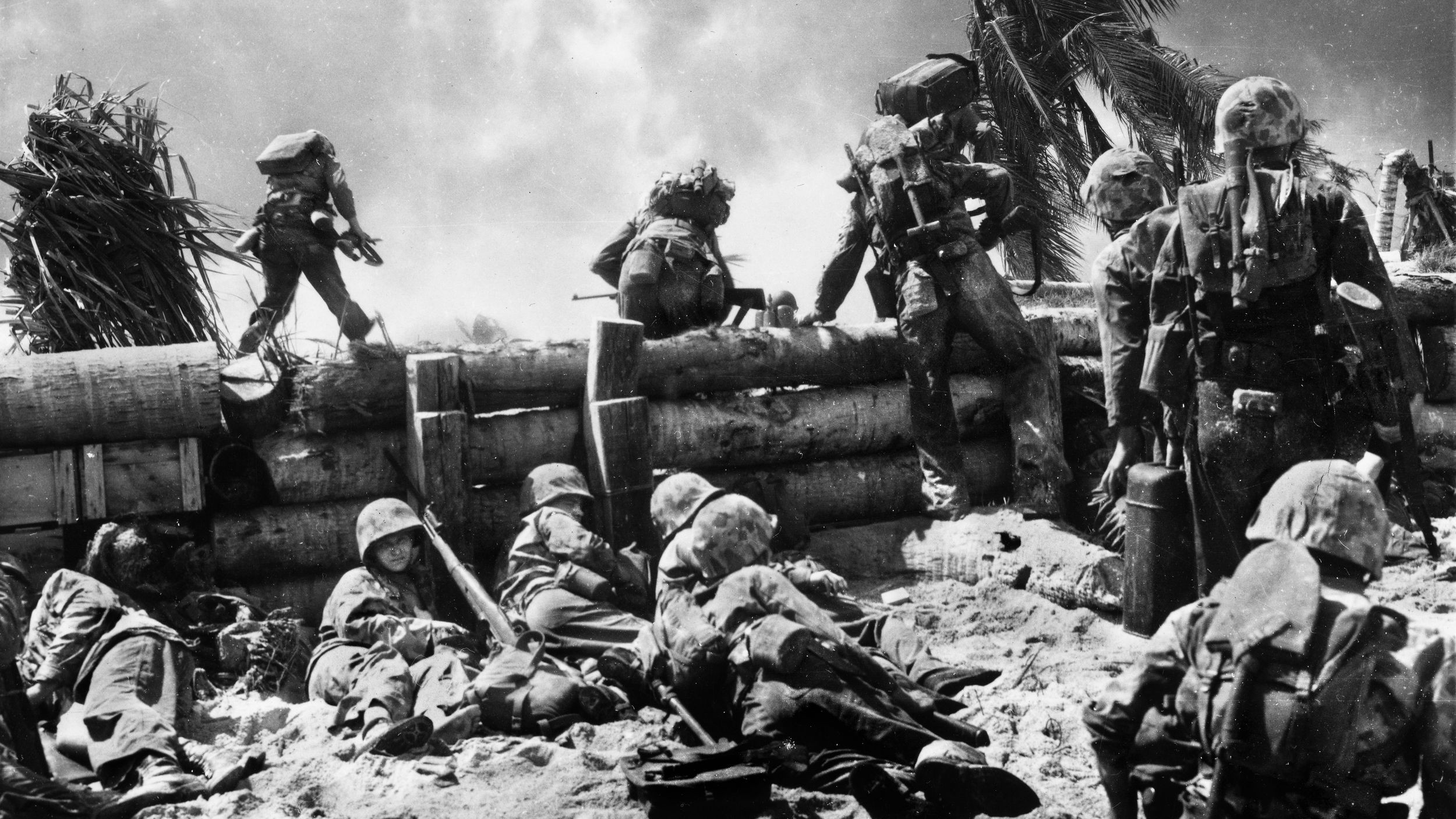
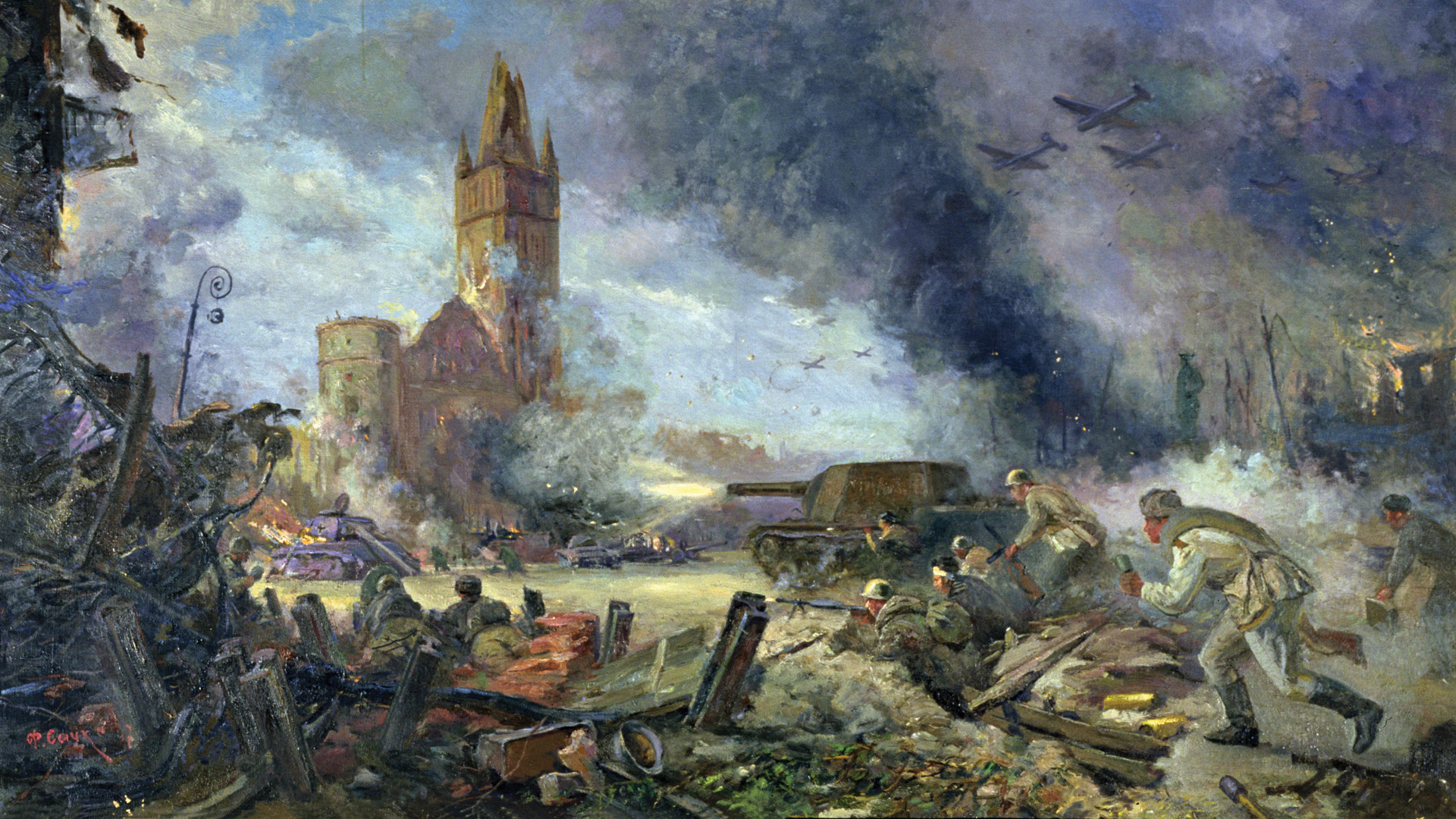
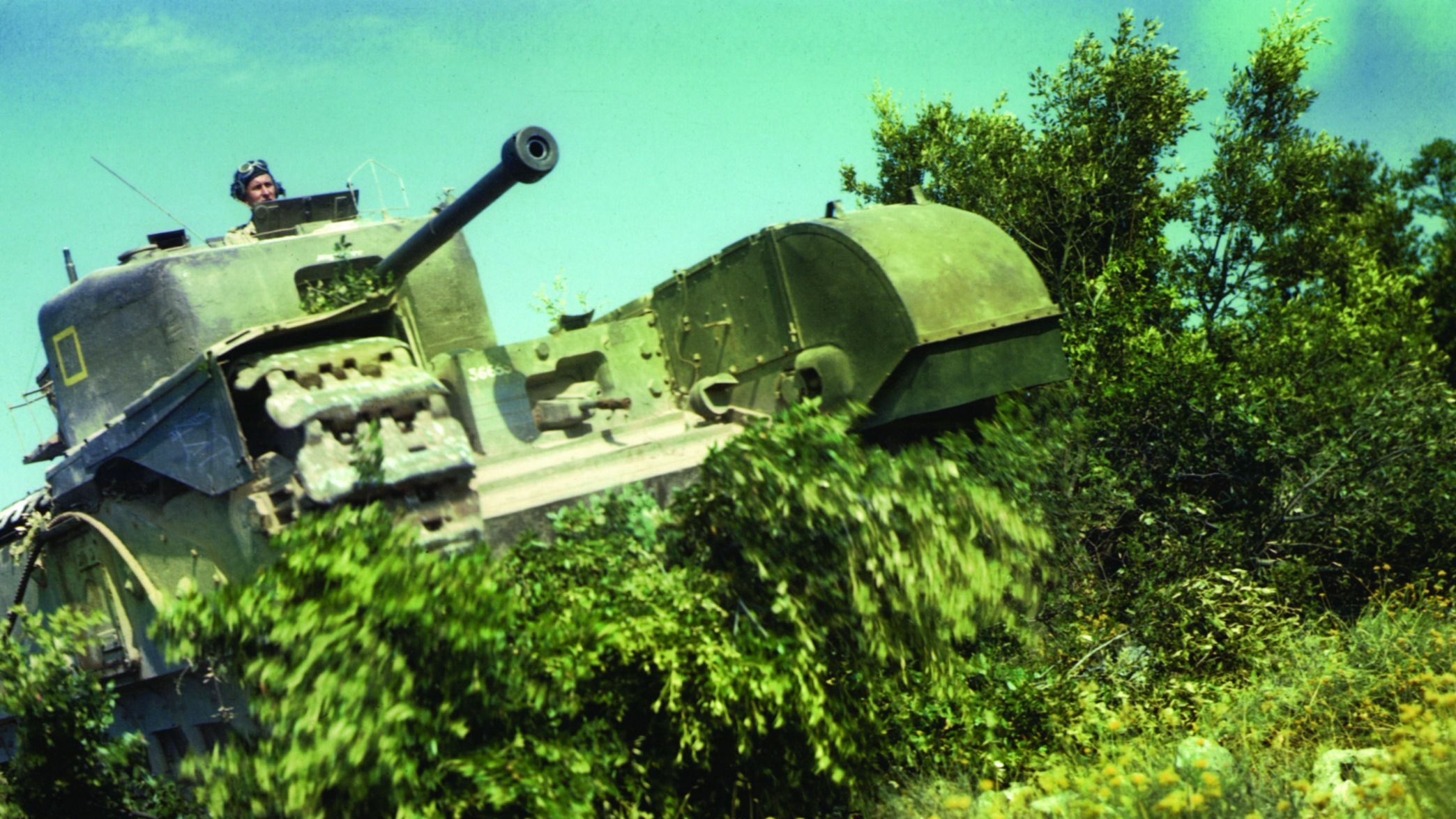
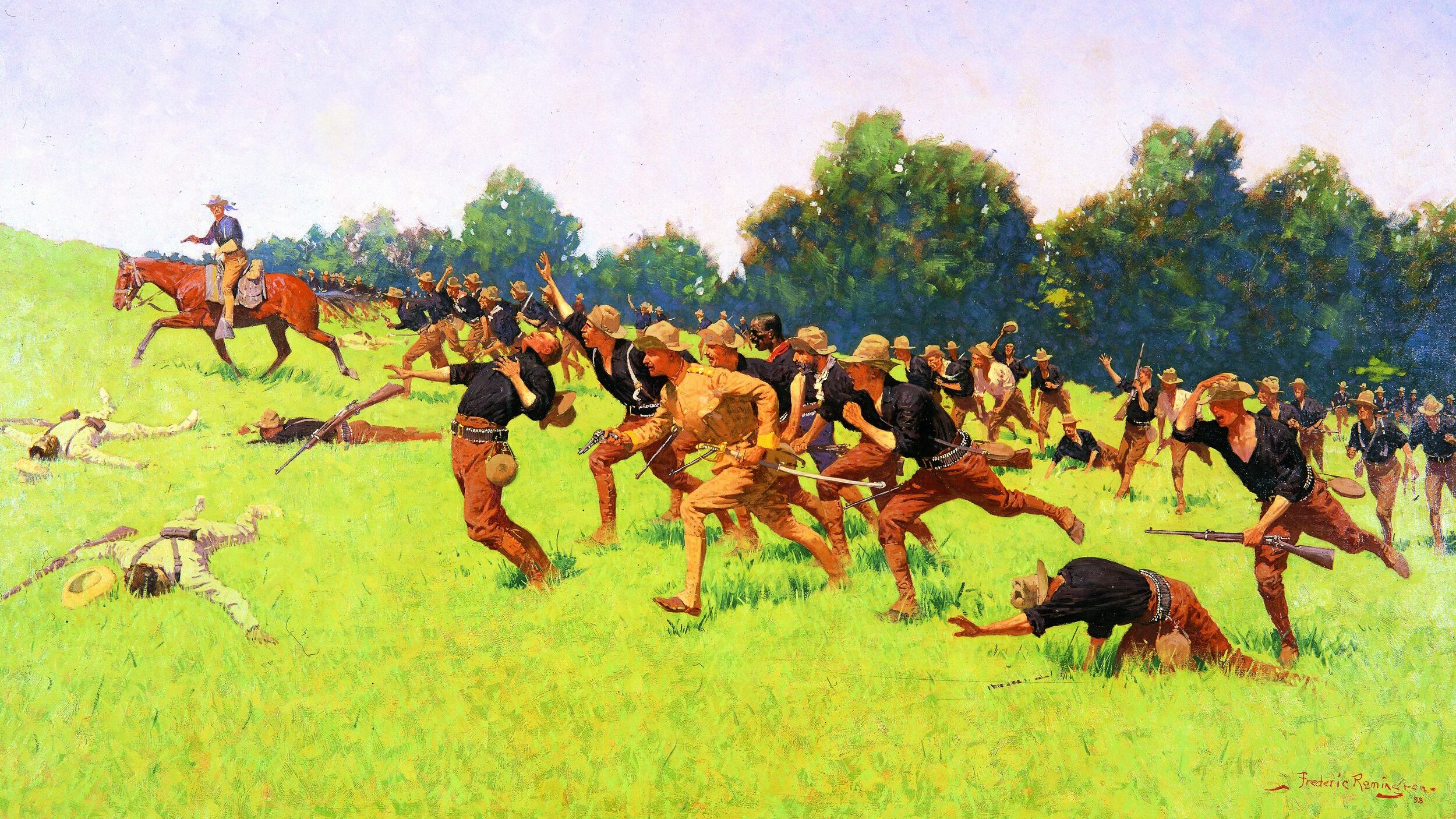
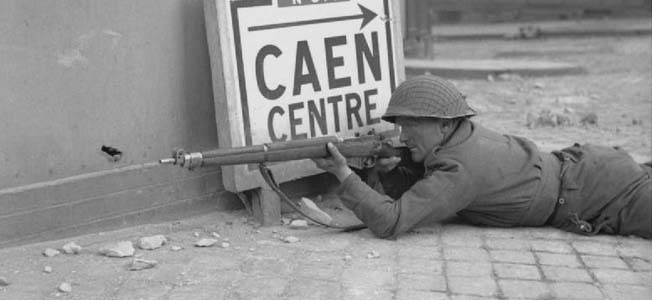
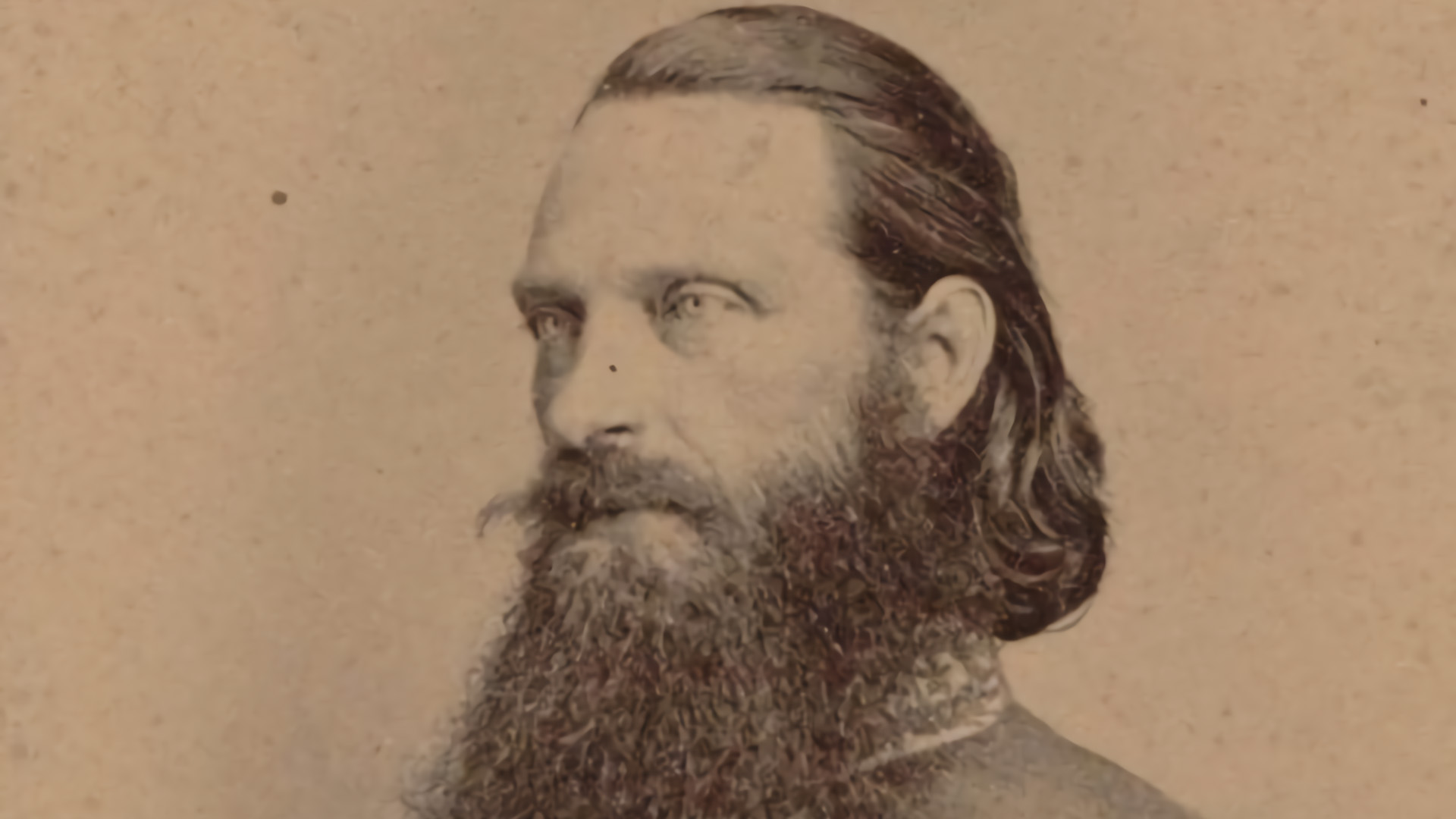
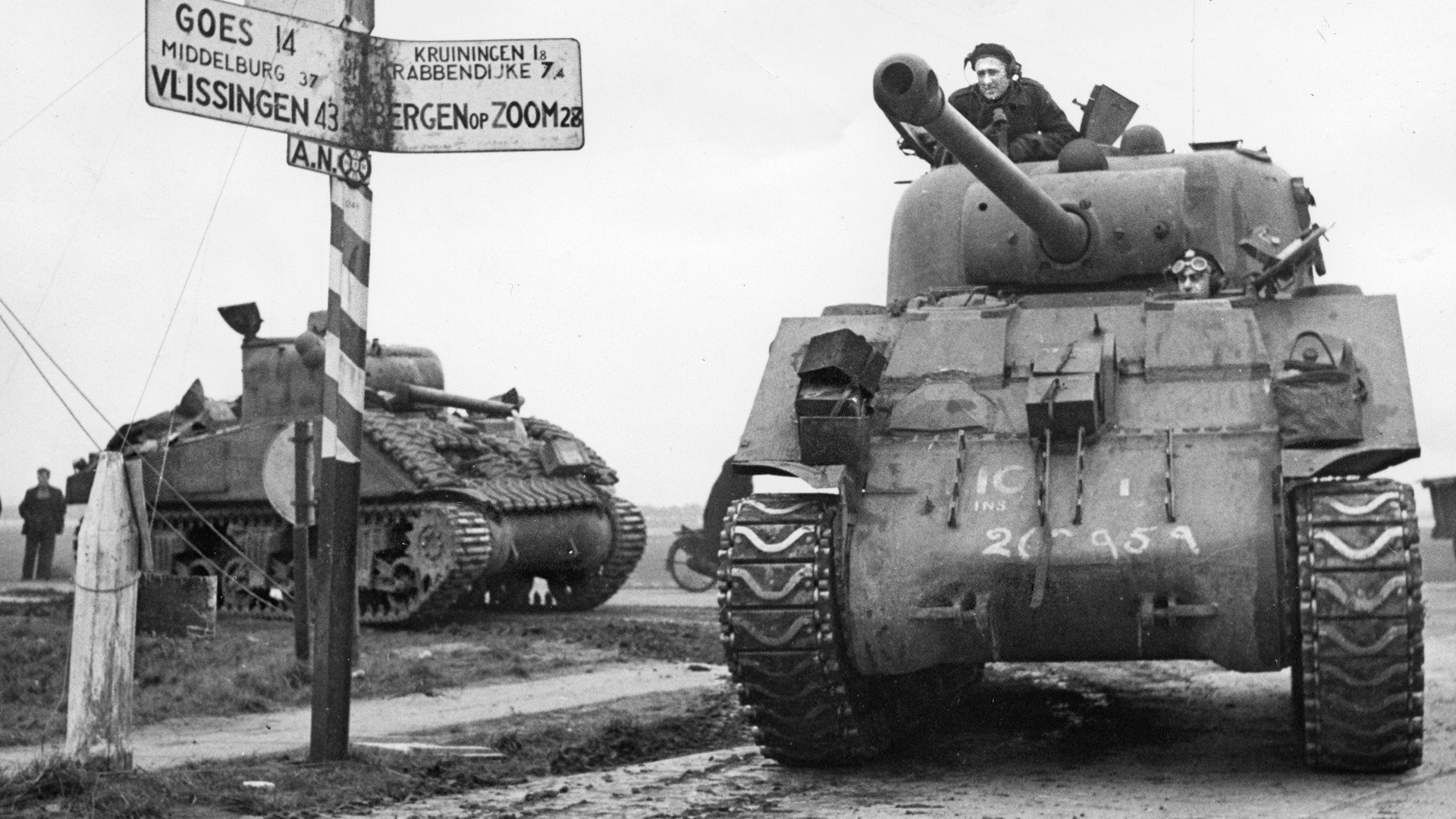
“Roosevelt favored one character trait above all others, and that was the courage of conviction that obligated a man to speak truth to power.”
Very powerful words indeed.
I love these profiles. They are very well researched and written. Keep up the good work.